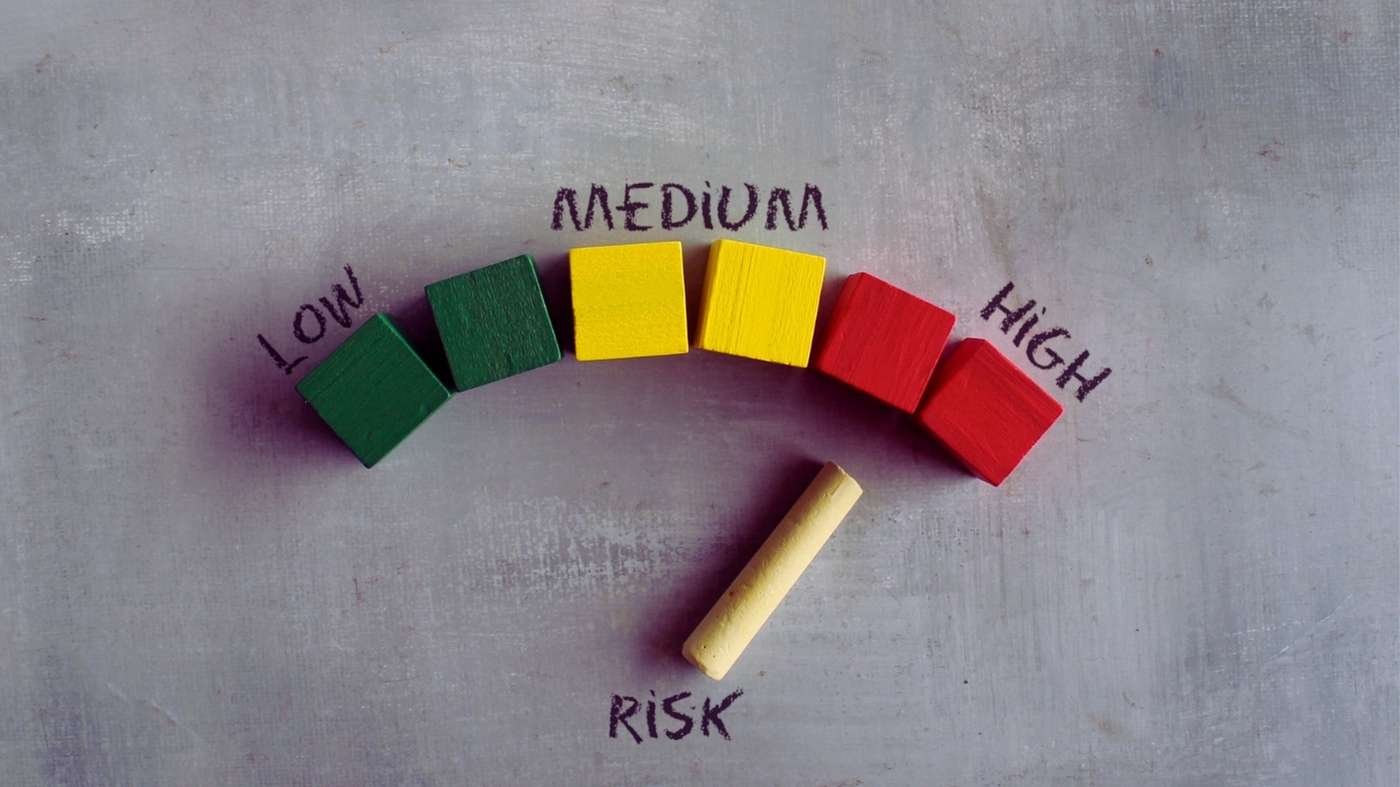🔍 Introduction: The Other Side of Returns
Returns grab headlines. Every mutual fund investor dreams of finding that one fund delivering a 20% CAGR. But behind that impressive number lies a story of risk, the market’s ups and downs, emotional rollercoasters, and hidden traps that most mutual fund investors often overlook.
Ignoring risk is like neglecting the weather while sailing. The sea may look calm, but storms often strike without warning.
In mutual fund investing, risk is not optional—it’s ever-present. Investors who learn to respect and manage risk are more likely to stay the course, sleep better, and reach their financial goals.
🎯 What is Risk in Mutual Funds?
Risk is the possibility that your investment’s actual return will differ from your expected return. It’s not just about losing money—it’s also about volatility, time horizon mismatch, and uncertainty.
Types of Risk in Mutual Funds
- Market Risk: Caused by overall market movements. Equity funds are particularly sensitive.
- Credit Risk: Particularly in debt funds—what if the bond issuer defaults?
- Interest Rate Risk: Rising interest rates can negatively impact bond fund NAVs.
- Liquidity Risk: Trouble selling your units during a crisis.
- Concentration Risk: Too much exposure to one sector or stock.
- Manager Risk: The fund manager may underperform.
- Behavioural Risk: Emotional decisions, such as panic selling.
🧠 Why Risk is Not a Bad Word
Contrary to popular belief, risk is not evil. Risk and return are directly related. Without taking some risks, you won’t get meaningful returns.
But the goal is to take calculated risks that align with your:
- Financial goals
- Time horizon
- Emotional comfort level
“Take enough risk to meet your goals, but not so much that you lose sleep.”
⚠️ The Consequences of Ignoring Risk
1. Emotional Reactions to Market Corrections
When markets fall 15–20%, uninformed investors panic and exit—often at the bottom. These emotional decisions lead to real losses.
2. Misaligned Portfolios
Someone saving for a child’s education in 2 years shouldn’t be 100% in small-cap equity funds. Yet, this happens all the time due to return-chasing.
3. Performance Disappointment
If you expect 15% returns from a large-cap fund (which typically delivers 10–12%), you’ll likely feel disappointed and exit prematurely.
4. Missed Financial Goals
You may not hit your goals, not because of poor markets, but because of your poor understanding of risk.
📋 Case Study: Risk Mismanagement
Investor A invested ₹10 lakhs in a mid-cap fund in 2018 based on its 3-year return of 22%.
In 2020, the fund was down 25%. Panicked, he exited and shifted to an FD.
Investor B invested the same amount but in a hybrid fund, knowing his risk tolerance. He stayed invested.
By 2023:
- Investor A’s value: ₹8.5 lakh (FD at 6%)
- Investor B’s value: ₹14.2 lakh (CAGR ~10%)
📝 Understanding Your Risk Profile
Before investing, understand your risk profile, which is shaped by:
- Age
- Income stability
- Time horizon
- Knowledge of markets
- Past investment experience
Tip: Most platforms now offer free risk profilers. Use them before selecting mutual funds.
📊 Matching Risk with Mutual Fund Type
| Investor Type | Risk Appetite | Suitable Funds |
| Conservative | Low | Liquid, Short-Term Debt, Hybrid Conservative |
| Moderate | Medium | Balanced Advantage, Large Cap Equity |
| Aggressive | High | Mid-Cap, Small-Cap, Sectoral/Thematic |
📉 Risk-Adjusted Return: The Real Measure
Don’t just ask: “What return did this fund give?” Ask: “What risk did it take to get there?”
Two funds both give 12%, but:
- Fund A: Small caps, volatile journey, -35% drawdown
- Fund B: Large caps, stable, -10% drawdown
Fund B is the better performer for most investors.
Metrics to look for:
- Standard Deviation (volatility)
- Sharpe Ratio (risk-adjusted return)
- Sortino Ratio (downside risk)
🔄 Practical Ways to Manage Risk
1. Diversify Your Portfolio
Don’t put all eggs in one basket. Use a mix of equity, debt, and hybrid funds.
2. Avoid Performance Chasing
Top performers change each year. Stick with consistency.
3. Invest via SIPs
Systematic Investment Plans help average costs and reduce timing risk.
4. Rebalance Periodically
If equity grows to 80% of your portfolio (from 60%), book profits and reallocate.
5. Align Fund Type with Goal
- <3 years: Debt or Liquid Funds
- 3–5 years: Hybrid or Balanced Advantage
- 5 years: Equity Funds
6. Emergency Fund First
Before taking risks, build an emergency corpus of 6–9 months’ worth of expenses.
💬 Real-Life Example: Nilesh vs Karan
Nilesh and Karan both started investing ₹20,000 per month in 2020.
- Nilesh goes all-in on small-cap funds.
- Karan splits between large-cap, hybrid, and debt.
In 2022, markets corrected 20%. Nilesh sees his portfolio drop 35% and withdraws.
Karan’s portfolio falls just 10%. He stays invested.
By 2025:
- Nilesh’s CAGR: 4.2%
- Karan’s CAGR: 9.5%
The difference? Karan understood and managed risk.
🧠 Tools to Help You Track Risk
Use these websites/tools:
- ValueResearchOnline – Category risk ratings
- Morningstar.in – Fund comparison tools
- VSJ FinMart – In-built risk metrics
🧭 Role of an MFD / Advisor
A Mutual Fund Distributor (like VSJ FinMart) helps:
- Assess your goals and risk profile
- Choose suitable funds
- Monitor risk and rebalance
- Protect yourself from emotional mistakes.
“The advisor’s role is not to beat the market. It’s to stop you from beating yourself.”
🚨 Common Mistakes Indian Investors Make
1. Investing in mid-cap/small-cap funds for short-term goals
Mid- and small-cap funds are known for high returns, but they come with high volatility. These funds are better suited for long-term goals (seven years or more). When used for short-term needs (like a 2-year car purchase), they expose the investor to sudden market downturns. A short-term market correction can erode capital and disrupt financial plans.
2. Choosing NFOs without understanding the category
New Fund Offers (NFOs) are often marketed with aggressive promises. Many investors jump in without knowing whether it’s a sectoral fund, a thematic fund, or a fund of funds. The lack of historical performance data makes it more challenging to evaluate. Unless you’re a seasoned investor, NFOs can bring unwanted risks.
3. Ignoring debt funds, thinking they give low returns
Many investors avoid debt funds due to their modest return expectations. But they play a crucial role in balancing risk. Debt funds offer better post-tax returns than FDs (in many cases) and reduce overall portfolio volatility. Ignoring them leads to overexposure to equities, making the portfolio more susceptible to risk.
4. Not reading riskometer labels
Every mutual fund has a riskometer label ranging from Low to Very High Risk. Many retail investors skip reading these, focusing only on past returns. As a result, they may unknowingly invest in high-risk funds that don’t match their financial goals or comfort level.
5. Switching funds too frequently
Frequent switching leads to exit loads, taxation issues, and a lack of compounding. Most mutual fund strategies require time to deliver results. Chasing recent winners by switching funds can be counterproductive. Staying consistent with a well-thought-out plan yields better results over time.
✅ Recap: What Should You Do?
✔️ Know your risk profile
✔️ Match it with the right fund category
✔️ Don’t chase past performance
✔️ Track risk-adjusted returns
✔️ Review and rebalance annually
🧘 Final Words: Risk Builds Resilience
Mutual fund investing is not a sprint. It’s a marathon of discipline, awareness, and patience.
Returns matter—but only when you can stay invested long enough to earn them. And you remain invested only when the risk doesn’t overwhelm you.
Respect risk, manage it smartly, and you’ll not only grow your wealth but also protect your peace of mind.
Invest smart. Stay informed. Grow wisely.
📘 Further Reading: Understand Risk Better
🔹 SEBI – Mutual Funds: Know the Risks
A regulatory overview of the different types of risks involved in mutual funds, directly from India’s market watchdog.
🔹 Morningstar – How to use the Fund Risk Measure Tool
Explains how risk works in mutual funds and how investors can measure it using tools like standard deviation and the Sharpe ratio.
🔹 AMFI – Understanding Mutual Fund Returns
Clarifies how mutual fund returns should be interpreted in the context of risk, time horizon, and volatility.
🔹 ET Money – Reduce Your Investment Portfolio Risk
Guides on diversifying across asset classes and employing rebalancing to maintain your desired risk level.
🔹 Value Research – How Risky Is Your Mutual Fund?
Breaks down key risk ratios and how they affect your investment performance over time.
Disclaimer: The information provided in this blog is for educational and informational purposes only and should not be considered as financial, investment, or tax advice. While every effort has been made to ensure accuracy, readers must consult a qualified financial advisor before making investment decisions. VSJ FinMart is an AMFI-registered mutual fund distributor (MFD) that does not provide investment advisory services. Mutual fund investments are subject to market risks; please read all scheme-related documents carefully before investing.

